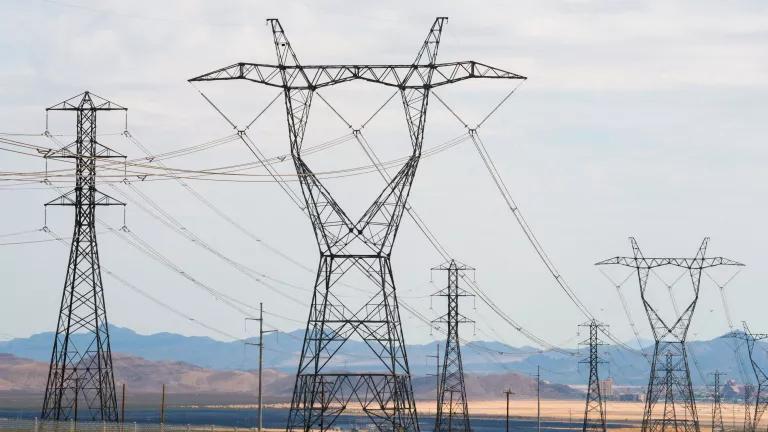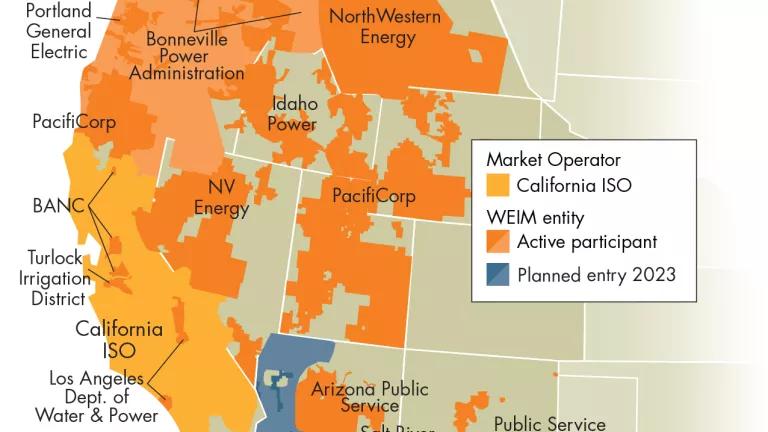Western Climate Initiative: OR & WA Add Caps to CA's AB32
In 2021, fifteen years after California made climate history by becoming the first US state to adopt an economy-wide carbon emissions cap, Oregon and Washington completed a West Coast hat trick by becoming the second and third. Well, almost.

Guest Blog by Angus Duncan, Pacific Northwest Consultant to NRDC
In 2021, fifteen years after California made climate history by becoming the first US state to adopt an economy-wide carbon emissions cap, Oregon and Washington completed a West Coast hat trick by becoming the second and third. Well, almost.
Oregon’s Environmental Quality Commission (EQC) voted on December 16 to adopt a declining emissions cap on most greenhouse gas (GHG) emissions originating within Oregon’s boundaries, including from transportation fuel suppliers, gas utilities and large stationary sources emitting >25,000 tons of CO2e annually. In responding to Governor Kate Brown’s 2020 Executive Order to the Oregon Department of Environmental Quality (DEQ) and other agencies to design and deploy actions to meet the state’s 2035 and 2050 emissions reduction goals, the EQC-adopted rule includes goals more stringent than the 80% reduction directed by the Order by 2050. The goal is now a 90% reduction in emissions by 2050 from today’s levels for these sectors.
Together with a parallel electric utilities’ emissions cap adopted legislatively earlier this year, between 70% and 80% of in-state GHG emissions are fixed on a downward emissions path. The electric utilities must be delivering 100% GHG-free electricity by 2040, (whether the source is in-state or out of state).
If Oregon also adopts recommendations from its Global Warming Commission to increase carbon capture and sequestration on Natural and Working Lands, Oregon could be carbon neutral by the early to mid-2030’s, and carbon-negative thereafter. That is, Oregon would be capturing and retaining more carbon and other greenhouse gases (GHG’s) every year than it would be responsible for emitting.
Washington’s 2021 Legislature adopted its own “cap-and-invest” measure regulating fuel suppliers, industrial emitters, utilities and others with in-state emissions greater than 25,000 tons/year. All allowances to emit are auctioned, with proceeds going to investments in clean energy and related needs.
Oregon interests that objected to the DEQ rule were almost all business lobbyists who argued that the costs would be prohibitive and the rules disruptive. Advocates for the rule—including many businesses supporting responsible climate policies—responded that the effects of climate change already being experienced by Oregonians—fires, flooding, forest health, heat events and public health, declining snowpack—were already more disruptive than a measure that, by DEQ’s reckoning, would actually have a small but net positive effect on state gross product, incomes and jobs. DEQ noted that its current Clean Fuels Standard for vehicles, which the business groups claimed would add a dollar or more to the price of a gallon of gasoline, had in fact added 4¢, while market swings in fuel prices have been many times that amount.
The adopted DEQ rule failed to remedy some of the soft spots identified by NRDC and others in comments to the agency. Large industrial stationary sources would continue to have the option of proposing their own BAER (for “best available emissions reduction”) technology compliance steps, which might or might not meet needed emissions reductions targets. But the agency, in response to comments, agree to set an overall emissions target for these emitters, to reserve for itself a final approval of the company’s plan, and to revisit the rule if reductions are lagging.
NRDC and others also expressed concern with DEQ’s take on a key alternative compliance tool, the Community Climate Investment (CCI) program. Under this initiative, an emitter that could not meet its cap and couldn’t (or chose not to) buy excess allowances from another emitter, could purchase a CCI allowance from an authorized CCI administrator at a stipulated and indexed price per ton. The administrator would then reprogram and distribute the funds to approved private CCI implementing entities, primarily organizations with low-income stakeholders, to deploy the funds to beneficial energy efficiency and GHG-reducing measures in low-income neighborhoods. We agreed with the dynamic for funneling funding but were concerned that equivalent emissions reductions might fail to materialize from unaudited projects. DEQ agreed in the final rule to set a sector target here also, and review the program if reductions failed to fully offset the extra emissions allowed to the emitter/CCI-allowance buyer.
It has been 15 years since Oregon’s first attempt at setting up a carbon cap and its joining with California, Washington, and other states in the Western Climate Initiative. In 2004 then-Governor Ted Kulongoski sought to parallel efforts in California by setting up a task force to design an Oregon cap, but the work was put on hold during the Great Recession. In the years since, advocates, agencies and legislators in Oregon have adopted piecemeal measures addressing transportation emissions, building efficiencies, and coal-fired power plants. In 2019 and 2020 Democratic legislators, enjoying working majorities in both chambers and a willing Governor, mounted efforts to negotiate and advance carbon cap measures. In both years these efforts were frustrated by quorum rules that allowed a minority of legislators—all Republicans—to stage a walkout that stymied floor action. Following the second of these attempts, Governor Brown issued her Executive Order directing DEQ and other state agencies to figure out how to proceed using existing authorities.
While much work remains to be done with transportation, land use, natural and working lands and other sectors and agencies, DEQ this week put a large down payment on Oregon’s carbon bill owing.



